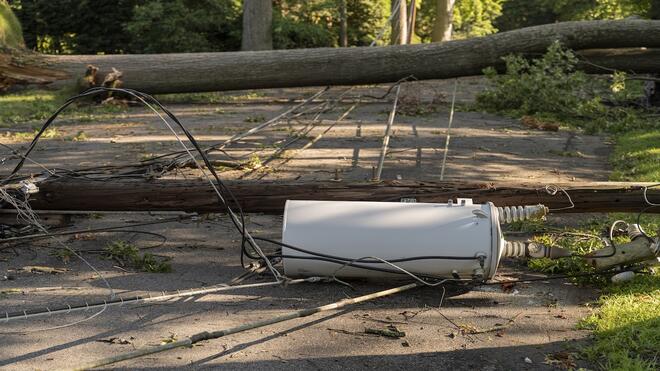The Logistics Battle Behind Every Storm

A Field Perspective on Why Smarter Infrastructure Is the Key to Faster, Safer, and More Cost-Effective Recovery
This year’s Atlantic hurricane season is expected to be more active than usual, with forecasters predicting a higher-than-average number of named storms and major hurricanes. In a high-stakes environment like this, the ability to assess damage quickly and accurately becomes essential to a resilient and cost-effective recovery strategy.
In a post last year, Dave Herlong, Ubicquia’s Chief Operating Officer, laid the foundation for managing storms with precision — from preparation, through weathering the event, to recovery — highlighting how an intelligent grid underpins each phase. In this follow-up, I’ll zoom in on the recovery stage and show why smart infrastructure is essential to restoring power faster, smarter, and more reliably.
Storm Restoration – A Logistical Nightmare
If you’ve ever worked storm restoration, you know it’s more than hard — it’s a logistical marathon. I’ve been there. My job was storm damage assessment. For hurricanes, as soon as the winds dropped below 50 miles per hour, I was one of a few people sent into the impact zone to figure out what was on the ground — poles, conductors, transformers — and report back. The process was the same for ice and winter storms.
The challenge is that grid damage often continues, even during the initial assessment, which means that damage estimates had to be updated before you could get an accurate sense of the work to be done. That information drove multimillion-dollar decisions. And yet, in many cases, we were working with just a handful of data points across an area the size of a small state.
You hope you're setting up staging sites in the right town. You hope you’ve got the right crew types and the right-sized gear. But hope is not a strategy. And every hour you spend correcting those early guesses adds to the cost, to the outage duration, and to customer frustration.
The truth is, storm restoration is a battle won or lost by how well you can coordinate four things:
- The Right Location – Where is the worst damage and the most customers impacted?
- The Right Crew Types – Tree crews? Line crews? Pole-setting crews?
- The Right Gear – Do you have the correct transformers, conductors, and poles on hand?
- The Right Speed – How can you most efficiently and safely restore power?
Miss any one of those, and things unravel fast. I’ve seen it — crews in the wrong town, transformers two sizes too big, gear staged a county away from the real damage. It’s not just frustrating — it’s expensive. Meals, motels, truck rolls, and idle time all stack up quickly.
But here’s the good news: we can do better.
Today, we’ve got storm response technology and tools I never had in the field. Pole and streetlight sensors that detect tilt and impact. Transformer monitors that send real-time alerts of circuit-level voltage and outage data. When you fuse physical data with electrical insights, you get situational awareness as the storm is happening, not a day later.
That changes everything.
Instead of spending two days figuring out where to go and what to bring, you can start restoration within hours, with precision. You know where to send crews. You know what gear they’ll need. And you get customers back online faster.
That’s what this blog series is about: how smart infrastructure and storm response technology help us get those four things right. We’ll dive into each one — location, crew type, gear, and speed — and how real-time insights can improve every step.
Look for my next blog on how grid edge intelligence can take storm damage assessment to the next level and help get your recovery underway before the all-clear by pinpointing where the worst damage has occurred.
Storms aren’t going away. However, with better data and tools, our response can be faster, safer, and significantly smarter.

